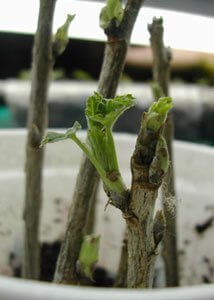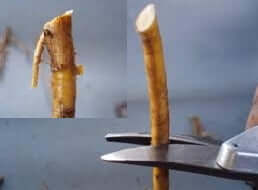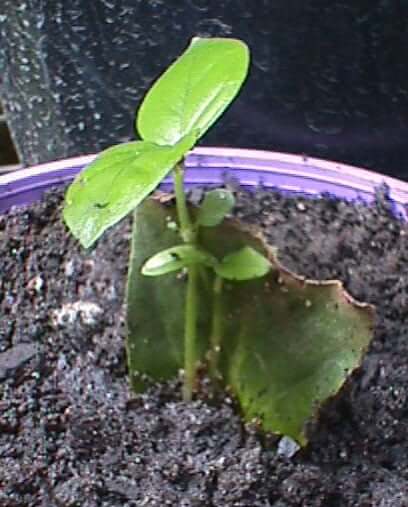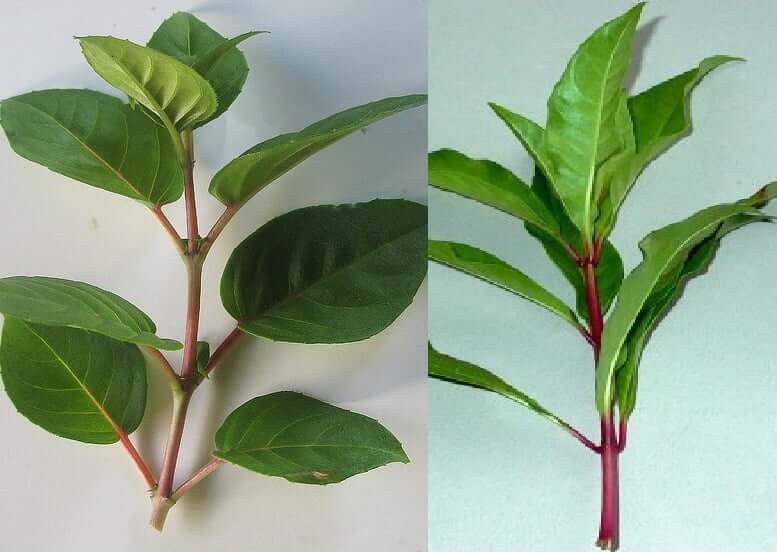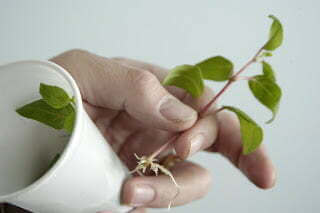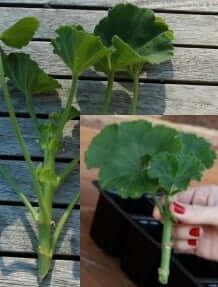Cuttings, or slips, are usually shoots (or parts of shoots) with buds and, often, leaves as well. In
some instances they may be portions of roots or leaves, or merely buds. Cuttings should be taken
only from healthy plants that are of average strength, neither weak nor excessively vigorous, as
cuttings won’t thrive if they are suddenly cut off from an abundant supply of nourishment. The
size of the cutting varies according to the plant, as it is made immediately above a node at the
top and below one at the bottom. A cutting may consist of just two nodes, but it is preferable to
have more. Stem cuttings can be divided into softwood cuttings, semi-hardwood cuttings and
hardwood cuttings.
| Softwood cuttings can be made during the active growing season (spring to late summer). With softwood cuttings, lengths of 50–100mm are taken from the young, half-ripened growing tips of shrubs. Plants that can be propagated by this method include impatiens and fuchsias.
Semi-hardwood cuttings and herbaceous cuttings are taken after the active growing season or after a growth flush, usually during late summer or in autumn. These cuttings consist of a short piece of stem, about 80mm long, with at least one joint (node) having a bud that is capable of producing a new shoot. Many deciduous and evergreen shrubs and perennials can be successfully propagated from semi-hardwood or herbaceous cuttings, including the popular pentas, penstemons and geraniums.
Hardwood cuttings are made in the dormant season (usually autumn and early winter), using wood from the previous season’s growth. The best cuttings are taken from pencil-thick wood, about 150–200mm long, with at least three leaf buds or nodes. These cuttings may take longer to root than softwood and semi-hardwood cuttings. Buddlejas and plane trees are normally propagated with hardwood cuttings.
Root cuttings can be taken from any plant that will sprout from the roots, for example, Japanese anemone or Acanthus mollis (wild rhubarb). Select vigorous roots and make 70mm-long cuttings.
Leaf cuttings can be made by using either the entire leaf or a portion of the leaf. Suitable plants include African violets, Streptocarpus, begonias and a variety of succulents. |
|


